What kind of pain should I be wary of as a bone metastasis?
From a self-care perspective, the pain caused by cancer bone metastases has the following characteristics
1, first of all, you have to be a cancer patient. Of course, there are cases of bone metastases before the discovery of the primary lesion in more malignant cases, but they are very rare. Most cases are due to a history of a primary tumor, such as breast cancer, prostate cancer, etc.
2, caused by the spine, limbs and other bone pain in several ways, usually fasciitis, arthritis, osteoporosis, etc. may cause pain, but the pain caused by these problems often in bed rest, hot compresses will appear after significant relief. If the pain is caused by bone metastasis of cancer, it will not get better with rest, so you need to be careful when you have obvious pain at rest, or even more obvious pain at night, and you need to go to the hospital for examination if you are not sure.
3, I see that a number of users have rhetorically asked, "What if the cause is identified?" Not being able to find out and not being able to find out are two different things. From the analgesic point of view, after identifying the cause, the analgesic measures will be more targeted, and at the same time, it is necessary to prevent pathologic fracture, so that the patient's quality of life may be better. On the other hand, being able to find out is closer to being cured than not being able to find out. Being able to detect means that you can also rule out suspicious cases, and if you can rule out a patient who suspects cancerous bone metastases, that's a very important thing for him to be able to do.
Bone metastases can occur in many malignant tumors, most commonly lung cancer, butBone metastases are generally not fatal, can survive for a long time, don't panic unduly.
Clavicular metastasis from poorly differentiated carcinoma that has survived with tumor for 5 years
This is a 58 year old gay man who started having persistent pain when his shoulder was gently stretched, and x-rays revealed hypodense foci: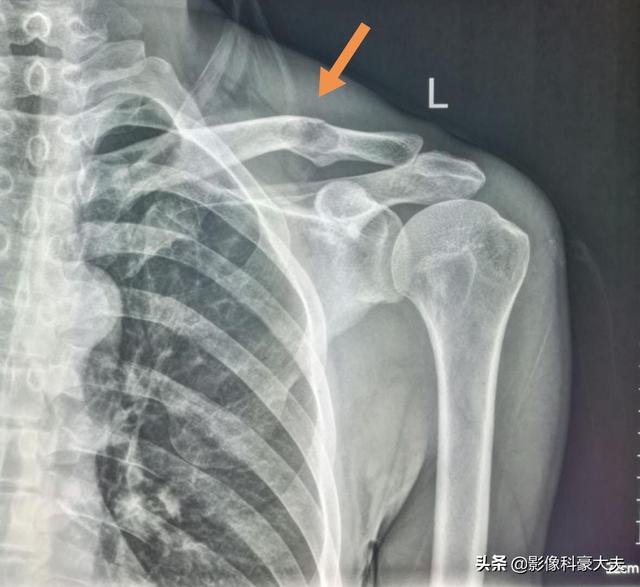
This was a pathologic fracture caused by minor external forces on the basis of a bone metastasis. A puncture was done and the pathology was a bone metastasis from poorly differentiated lung adenocarcinoma.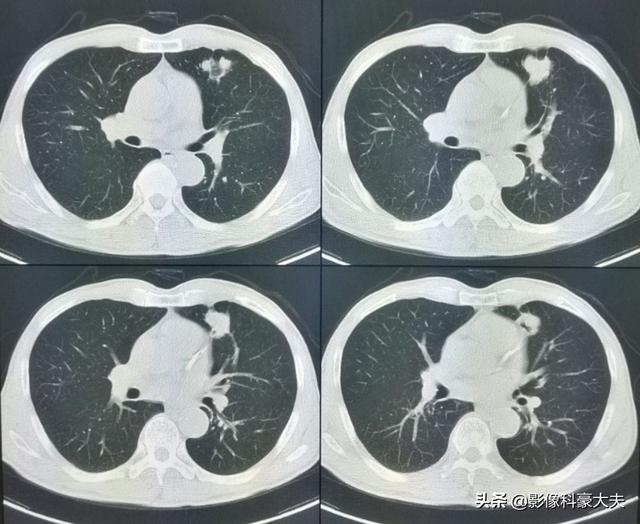
This irregular nodule in the left lung is the primary focus, which is only 2.6 centimeters. Lung cancer with bone metastasis like this is no longer operable. It can't be helped, lung cancer is too common, and some early symptoms are atypical or even asymptomatic.In about 30% of lung cancers, symptoms of metastases are the first manifestation, and metastases are detected first before lung cancer is further detected.
Fortunately this patient was sensitive to treatment and has been treated for 5 years with a combination of chemotherapy and targeted therapy based treatments.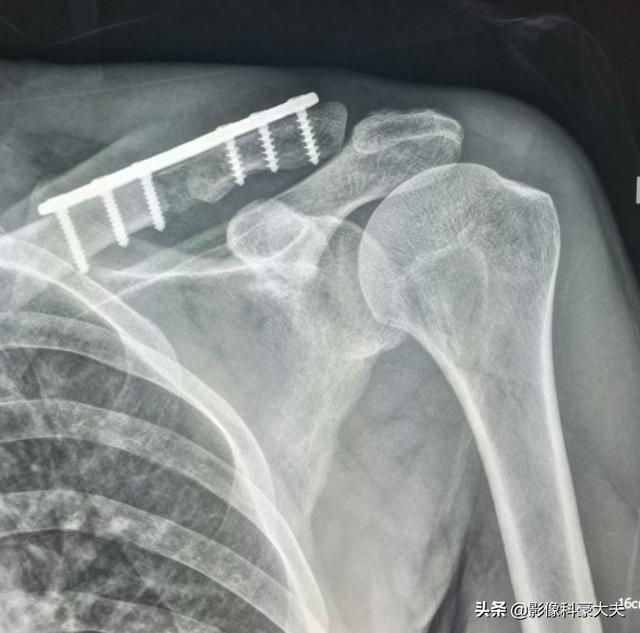
This is the internal fixation surgery he had done at the time for a clavicle fracture, a pathologic fracture that is difficult to heal on its own without surgery.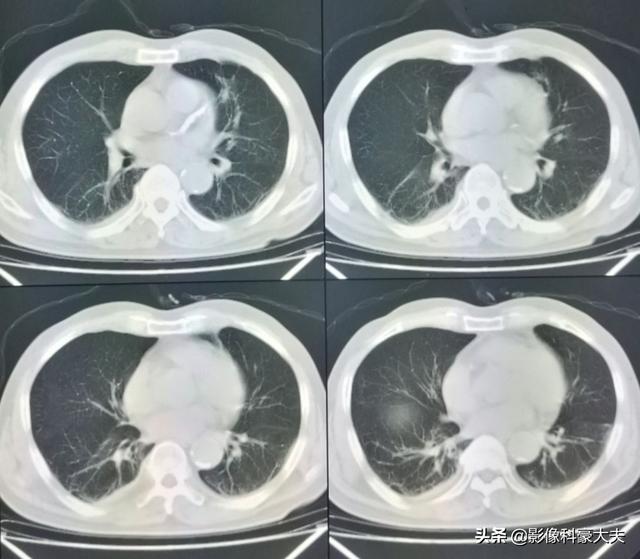
His most recent CT review showed that the primary photo had shrunk a lot and he was lucky to survive with retention for over 5 years!
What kind of pain should alert you to bone metastases?
Frankly, the presentation of bone metastases is related to the site of occurrence and is not strongly characterized. Common features are:Nocturnal and resting pains are predominant, recurrent and long-lasting.
in particularMiddle-aged and elderly people, new back and leg pain, joint pain, and even toothache, if a short period of time recurring episodes, try to hang up orthopedics seriously check out, have a disease early treatment!
This old man, with a toothache on the right side and a pain in the cheek bladder, for more than two months, has been taking medicine as if he were an old man with inflammation of the roots of his teeth, but isBone destruction in maxillary sinus cancerUp.
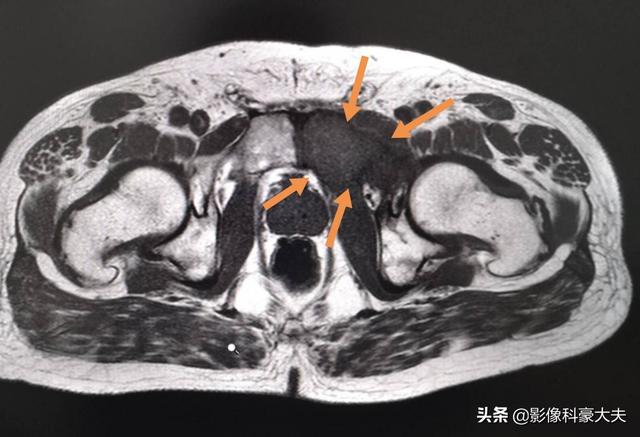
This patient.Left hip pain, worried about femoral head necrosis, turned out to be lung cancer bone metastasis.
Malignant tumors have been increasing at an annual rate of 3.9% over the last 10 years.We are not going to discuss the reasons for the high incidence of cancer. As middle-aged and elderly people, especially those with family history of tumor, they should pay attention to health checkups! Even if they are not in a position to have a medical checkup, when body parts send out abnormal signals, especially when bone and joints show persistent pain, which is heavy at night and is not relieved by taking painkillers, it should be taken seriously!
I'm Dr. Howe in Imaging. Welcome!
Just a few days ago just diagnosed a case of lung cancer bone metastasis patient, his symptom is long-term lumbar back pain, they have always thought that it is lumbar muscle strain, or suffering from lumbar disc herniation, did not care, really the pain is serious, and appeared the nerve symptoms of the lower limbs, only to the hospital for examination, given to its ct examination, found that there are obvious vertebral bone destruction ...... detailed pursuit of medical history, found that the patient has long-term coughing symptoms, so highly suspicious of lung cancer bone metastasis, the lung ct examination, found the primary focus ...... a huge lung cancer.
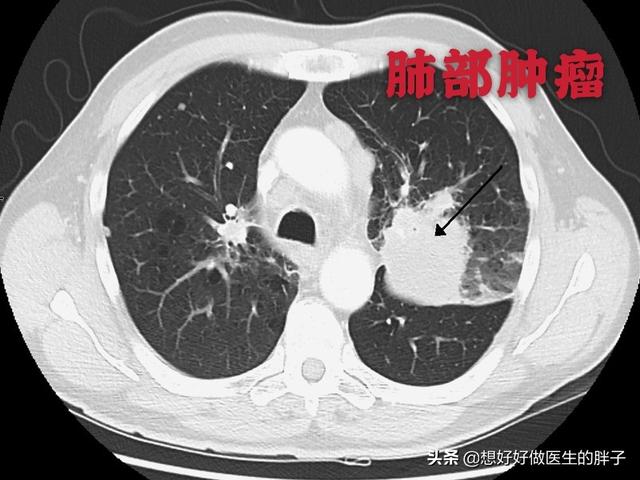
indeedIt's hard to be a doctor when you diagnose a disease like bone metastasis.because once bone metastases have occurred.It means the cancer is at an advanced stageThe chances of survival may have to be significantly reduced and the duration of survival shortened. What is bone metastasis? Why do some cancer patients already have bone metastasis when they are found? What are the characteristics of pain symptoms in patients with bone metastasis? Let's have a good chat about this.
bone metastasis
bone metastasisare certain malignant tumors that originate outside of bone tissue.through the bloodstream to the bone tissue.A disease caused by bone damage and pain as the main manifestation.
This statement may seem awkward, so by giving you an example, you may understand it better, for example, if there is a patient who has lung cancer, then the lung cancer is first formed in the lung tissue, but theTumor cells in the lungs can be separated from the original massthat passes through the bloodstream to other areas of the body, such as within the bones, a condition calledbone metastasisThe important point here is that even if cancerous cells are found in the bones, they are still there. The important point here is that even though cancer cells are found in the bones, theThis cancer cell is not from bone tissue, it's a lung cancer cell.。
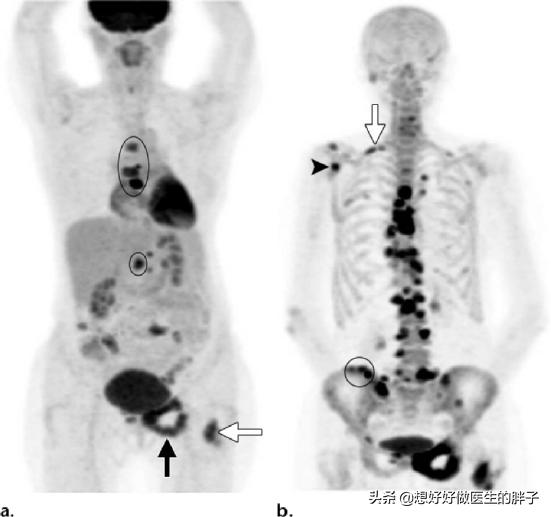
Bone metastases occurring in the spine were the most common (34%), followed by the pelvis (20%) and the long bones of the lower extremity bones (12%)。

Breast cancer is the most likely cancer to develop bone metastases, there is a 65-75% chance of bone metastasis; prostate cancer has a 65-75% chance of bone metastasis; thyroid cancer has a 60% chance of bone metastasis; and lung cancer has a 30-40% chance of bone metastasis.
And once bone metastasis occurs, the survival time of the patient will be significantly reduced, and some studies have shown that patients diagnosed with bone metastasismedian survivalFor:Lung 6 to 7 months; bladder tumors 6 to 9 months; renal cell carcinoma 12 months; prostate cancer 12 to 53 months; thyroid cancer 48 months; this median survival, one can interpret it as only 50% of patients can live to this time after developing bone metastases.

What are the common pain characteristics of patients with bone metastases? What are the other symptoms?
The most common symptom in patients with bone metastases isPain, often the first symptom in patients with bone metastases, this pain, in some patients, is intermittent, that is, sometimes it hurts, sometimes it doesn't, but it slowly becomes worse and lasts longer and longer, and in many patients it manifests as a pain in thePain is worse at night.. Some patients experience pain in the spine andThis pain is not relieved by rest or lying down.. Many patients have pain that is not very severe in the early stages, but the symptoms can become more and more severe over time, and in some cases painkillers do not provide relief.

Bone metastasis can weaken the bad guy's bones and lead to breakage, a condition that we callPathological fractureBone metastasis of cancer occursThe rate of patients presenting with pathologic fractures in cancer patients is 10-30%.I once saw an old man who had metastasized from prostate cancer to the femoral stem, watered his flowers at home, and had a fracture that occurred when he turned around, a fracture that likewise induced significantPain and dysfunction。
As already mentioned.the spine is the most likely place for bone metastases to occur.So if the transfer is followed by a transfer, then there is a possibility ofCompression fractures of the vertebral bodyand the swelling can also tip into the spinal cord, causing theCompression of the spinal cord, which can cause symptoms similar to nerve root irritation, such asNumbness and pain in the lower extremities, some patients who have compression of the spinal cord will be at risk forChanges in walking gait and weakness of the limbs, and in some patients who have severe compression fractures or tumors that severely compress the spinal cord, patients are at risk of developingparalysis。
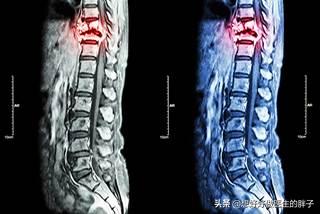
In patients with bone metastases, a more serious abnormality is caused byhyperglycemiaThe reason is that when bone metastasis occurs, calcium leaks from the bones into the bloodstream. This is because when bone metastases occur, there is calcium leaking from the bones into the bloodstream, leading to hypercalcemia, and severe hypercalcemia can lead to patients developingConstipation, nausea, loss of appetite, extreme thirst, frequent urination, dehydration and fatigue, and in the worst cases, coma。
Knowing the above, let's analyze why many cancer patients, when found, have bone metastases
In fact, the main reason is that many patients who have symptoms in their bodyOne word was adopted, and that was drag.。
As in the beginning of the article, Dr. Xie introduced this case, he has been in pain for a long time, but did not care about it, always thought it was a lumbar disc herniation or lumbar muscle strain, never went to the hospital for diagnosis, and did not consult a medical professional, and the cancer metastasized during the long delay.
In addition, in the early or middle stage of some cancers, patients often do not have special symptoms, for example, some lung cancer patients may show coughing, but since there is no obvious coughing up of blood, or serious breathing difficulties, patients usually think that they may have inhaled some kind of smoke, or are allergic to it, or have bronchitis, and neglect the examination of symptoms.
Some patients will go to the hospital for checkups because they have symptoms, and the doctor suggests ct, but the patient feels that it is troublesome or costly, and often chooses a normal x-ray, butThe sensitivity of ordinary x-ray examination for tumor diagnosis is very low, only 44~50%, while the diagnostic sensitivity of CT for bone metastasis is 71%~100%, the diagnostic sensitivity of MRI is 82~100%, and the sensitivity of PET_CT for the detection of tumors reaches 92%, with a specificity of 99%, and the difference of these data is clear at a glance!。
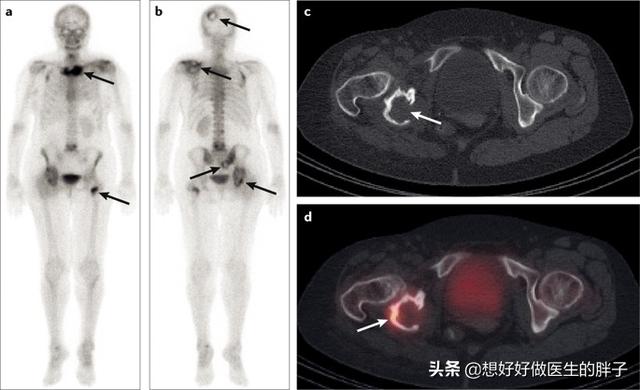
So is it true that if bone metastases have occurred and are at an advanced stage, they don't need to be treated?
Of course not. We still have to try to get through all the therapies.Maximize patient symptoms and quality of life.. The exact treatment plan depends on the type of cancer, the location and extent of metastasis, and the overall health of the patient. And the treatment for the primary cancer appears to be very important.
Patients with bone metastases are often treated with systemic or localized therapies.. Split treatment includes therapies such as chemotherapy, targeted therapy, immunotherapy, or hormone therapy, and a drug is also given to patients with bone metastases calledBisphosphonatesThe medication can make the affected bones stronger and can also help prevent re-fractures or fractures in other areas. WhileLocalized treatments include radiation, ablation, and surgery, among others。
In short the overall aim is to minimize patients' suffering, prolong their survival and improve their quality of life.
summarize
Just the other day while chatting with a couple of our orthopedic colleagues.We've all been saying that more and more patients are now being diagnosed with cancerous bone metastases in the outpatient settingAnd it can be said that there are more and more cancer patients of all kinds around us, why is this happening? Factors are multiple, such as diet, genes, environment, smoking, drinking and bad habits.
Although the pain of patients with cancerous bone metastases is characterized by certain features, you will also find that there are some symptoms that interfere with the common disease.If the patient occurs, bone metastasis of the spine stimulates the nerves, then it is easy for the doctor or the patient to misdiagnose the symptoms induced by disc herniation, and at this time, as the patient, the body has abnormalities, we should seek the help of the doctor in a timely manner, and as the doctor to try to communicate with the patient, to do some relatively high quality examination, try to rule out the possible risk of bone metastasis, such as for the long-term back pain of the elderly, we often recommend its nuclear magnetic examination instead of x-ray examination. For example, for elderly people with chronic low back pain, we often recommend that they undergo a magnetic resonance imaging (MRI) instead of an x-ray.
It is also recommended that after the age of 40, adults should undergo a physical examination once a year, and must do gastroscopy, colonoscopy, and chest examination, so that problems can be detected and dealt with at an early stage, and some cancers can be cured, and they will not be delayed to such an extent as bone metastasis, don't you think so?
The above is for the bone metastasis of some simple small science, if you have other doubts you can leave a message below, we can discuss together.
I'm Xie Xinhui, who insists on using simple language to explain the complex knowledge of disease, it's not easy to code, if you agree with me, please help point a concern or point a like it, if you or your family and friends also have this trouble, please forward this article to the need of them, thank you!

What kind of pain should be alerted to bone metastasis? Bone metastasis is a common manifestation of malignant tumors in the late stage, which refers to the primary tumors in other parts of the body metastasized to the bones through blood and lymphatic channels, forming bone metastases. Bone metastasis represents that normal bone tissue has been destroyed and replaced by tumor tissue. Bone metastases can be categorized into three types according to the specificity of the lesion: osteolytic type, osteogenic type and mixed type. The common sites of bone metastasis are the middle shaft bone (spine and pelvis), ribs and lower metaphysis, especially the middle shaft bone is the most common, which is related to the characteristics of the blood supply in this area. As shown in the circle below, there are multiple bone metastases and the spine is in a bad shape.
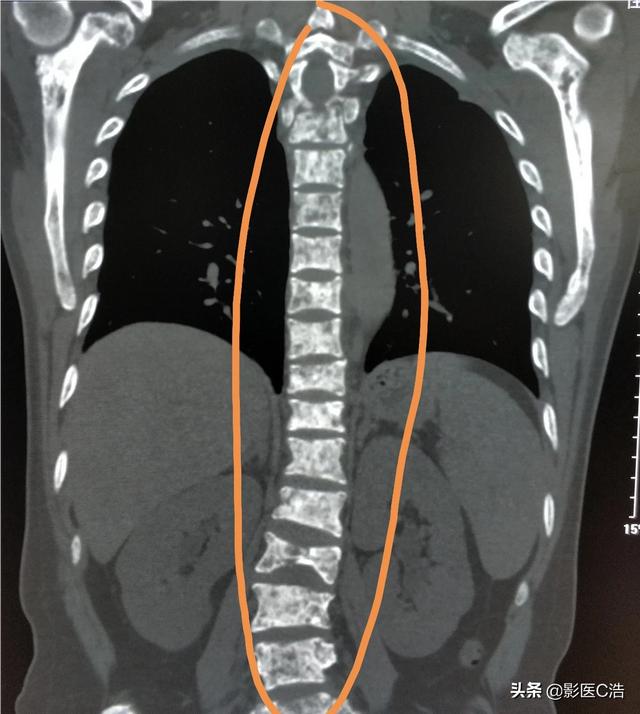
What are the symptoms that can occur with bone metastases? The first symptom is pain. The site of bone metastasis will feel pain due to the destruction of bone, which may not have obvious symptoms or intermittent pain at the beginning, but due to the fact that the tumor destroys the normal bone in a progressive manner and gradually aggravates, the pain in the site of metastasis is also gradually aggravated. Clinically, we may encounter a case of bone pain in a certain part of the body, and the result is bone metastasis of malignant tumor. Some time ago, I met a case, 40 years old, shoulder pain, thought frozen shoulder, rubbed a few days of medicinal oil did not improve, but more and more pain, so to the hospital for examination, did a magnetic resonance imaging (MRI), scapula has been eaten by a piece of the (tumor), considering bone metastasis, and then did a chest CT, a nodule in the right lung, and then took a biopsy to do the pathology, which was bone metastasis of lung cancer. The information is as follows.

At the site of bone metastasis, since normal bone tissue is destroyed and replaced by tumor tissue, and tumor cells are constantly proliferating, soft tissue mass shadows can be seen at many sites of bone metastasis, and can be palpated if the mass is located in a superficial position. In addition, the erosion of normal bone tissue by tumor tissue will also lead to the destruction and weakening of normal bone structure, so fractures can occur under normal external force, called pathological fractures (Figure below). In addition to pain and pathologic fracture, metastases to the spine can also present with compression of spinal nerve roots with symptoms such as sensory impairment, muscle weakness, and in some cases, hypercalcemia.
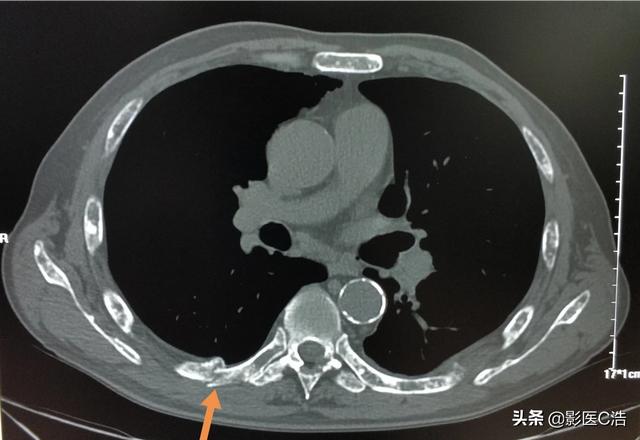
Clinically, malignant tumors that are more prone to bone metastasis include breast cancer, prostate cancer, lung cancer, thyroid cancer and kidney cancer, which account for about 90% of the primary tumors of bone metastasis, so if you are suffering from the above mentioned tumors, you should pay attention to whether there is any abnormality in the bones during the examination. Although the occurrence of bone metastases belongs to the advanced stage of the tumor, the treatment effect of some patients is still quite good, especially for those with simple bone metastases, and many of them can get a relatively long survival period or even live with the tumor for a long period of time through comprehensive treatment.
I'm @ShadowMedicineCho , and I can be followed to learn more about related medicine.
Because my practice is in urology, I come into contact with a lot of prostate cancer at work, and bone metastases are the first thing to show up in advanced prostate cancer, so I'm somewhat familiar with the symptoms of bone metastases.

Here's what you need to know about this particular group of diseases:
(i) Level of pain
Bone injuries caused by trauma in daily life can lead to severe pain and localized soft tissue edema, and the appearance and symptoms are very obvious. Localized pain caused by muscle strain is aching and will be relieved soon after proper rest. Localized infection will show typical symptoms of redness, swelling, heat and pain, with obvious tenderness.
However, the pain caused by bone metastases is very specific, not very severe pain, we described in the book as "ant-eaten" pain, which in plain English means pain like small insect bites, and the pain is persistent, no matter what position is taken, the pain will not be relieved. This is a very specific type of pain, very different from most of the pain we experience in our lives from tissue damage.
(ii) Site of pain
The occurrence site of bone metastasis is usually related to the primary cancer lesion, and in general the closer to the tumor, the higher the probability of metastasis. Breast cancer, due to being in the chest, is most commonly found in sternal and rib bone metastases, followed by thoracic and lumbar vertebrae of the spine; for lung cancer bone metastases, the spine and limbs are the high prevalence locations; for kidney and cervical cancer metastases, lumbar vertebrae and pelvic metastases are most common; and for prostate cancer metastases, the entire spine and limbs will be present.
Because the spine is rich in blood flow, it is the first choice for most cancer metastases. When there is persistent "ant-eating" pain in the back or other parts of the body, and you have a history of cancer or a family history of cancer, you need to be vigilant.

(iii) How to diagnose
If a patient has no history of cancer, and if the family is financially sound, it is recommended that a PET-CT examination be performed to screen the entire body for suspicious cancer lesions, which can adequately determine the presence of tumor lesions, how far they have progressed, and what kind of metastatic foci they have, among other things.
If there is a history of cancer and the degree of malignancy is judged to be high at the time, it is possible to determine the presence of bone metastases through a whole-body bone scan. At the same time, the degree of bone destruction at the site of metastasis can be clarified by magnetic resonance examination.
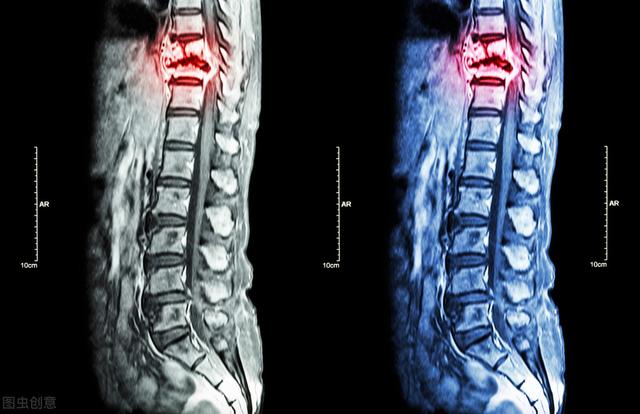
(iv) How to treat
In fact, almost all cancers that develop into advanced stages are basically able to spread through the bloodstream to form bone metastases because the conditions of the bone marrow cavity are suitable for the implantation and growth of various types of cells, whereas other parts of the body are required to find similar types of tissue surfaces in order to adhere and grow.
The cancer cells in the bone marrow cavity are also homologous to the cells in the primary cancer lesion, so the treatment is not directed at the bone metastasis, but at the primary cancer lesion, which can be considered a loss. When the progression of the primary tumor foci is controlled, the bone metastases will also be controlled.
Of course, for a small number of bone widow metastases, the elimination of the tumor can still be achieved by local radiotherapy.

(v) What are the complications of bone metastases?
Bone metastasis will cause serious bone destruction, resulting in persistent pain, seriously affecting the quality of life, and requiring long-term analgesic treatment in the later stages. Tumor compression of the spine may even result in paraplegia-like symptoms, such as paralysis of the lower limbs and inability to urinate.
Since the bones at the site of bone metastasis are already very fragile, they are very prone to various degrees of fracture, such as compression fracture of the spine, fracture of limbs and ribs, etc. The bone metastasis of prostate cancer with bone metastasis has been found to be very fragile. Once, the orthopedic surgery found that part of the bone was as brittle as a cookie, and called our department for consultation, which was finally diagnosed as prostate cancer with bone metastasis.
When bone metastases have progressed to a certain extent, they will also manifest as persistent irreversible pernicious anemia, with a gradual loss of bone marrow hematopoietic function, and the patient will gradually have to rely on monthly blood transfusions to maintain life for several months.

concluding remarks
Although bone metastases do not cause disease per se, the disease affliction they bring is long term.
Bone metastasis is also a sign that the cancer has progressed to an advanced stage. If the growth of the primary lesion can be controlled, then the development of bone metastasis can be curbed, otherwise the next step is the development of pernicious anemia, and the survival period will not be too long.
I still wish all cancer patients early diagnosis and early treatment to avoid getting to that stage where honestly the patient suffers and the family suffers.
Dr. Huang insisted on using plain language to tell his clinical understanding, if you agree with my views, please help point a concern or click a like it, if you or your family and friends, need to know about the relevant knowledge, please forward this article to the people who need it, thank you!
Talking about bone metastatic cancer reminds me of something that happened to a patient when I was a resident. This patient was a patient with massive liver cancer. At that time, my supervising surgeon and I successfully completed a hepatectomy because the patient had a small tumor on his head and I had talked to the patient before the surgery to help him remove the small tumor on his head by the way when we finished the surgery on his liver. Therefore, after the superior doctor left, I continued to stay to help the patient to remove the small tumor located in the head. When I cut the small tumor in the head, I found that the tumor was cut deeper and deeper until I saw the white brain tissue with the surrounding worm-eaten damaged skull, which scared me at once, and I rushed to tell the superior doctor, and then the expert of cranial and cerebral surgeon came to deal with it at once. This case made me understand the disease of cancer bone metastasis for the first time.
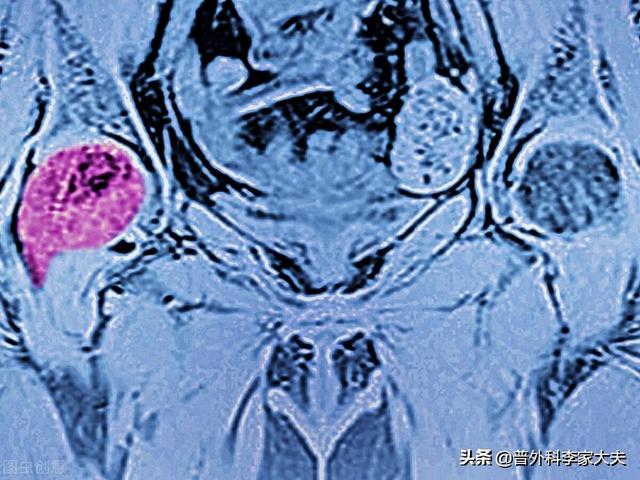
Magnetic Resonance Imaging of Bone Metastatic Cancer
Bone metastasis, also called metastatic bone tumor. It refers to malignant tumors originating from organs or tissues outside the bone, which metastasize to the bone through blood or lymphatic transfer and continue to grow, forming metastatic cancer of the bone.
There is still a pattern of developing bone metastatic cancer for cancer patients:
- Middle-aged and elderly cancer patients, who are prone to bone metastatic cancer, are most common in the age group of 40-60 years old.
- Most cancers that develop bone metastases are mid to late stage cancers, and the more advanced the cancer, the more likely it is to develop bone metastatic cancers.
- The less differentiated and more malignant the cancer, the higher the risk of metastatic cancer to the bone.
- The relative risk of bone metastatic cancer varies from cancer to cancer. In the risk of bone metastatic cancer, breast cancer > prostate cancer > thyroid cancer > lung cancer.
- Cancer patients, have its relatively favorable sites of bone metastasis. Where spine > pelvis > long bones of lower limb bones, ribs > skull > long bones of upper limb bones.

Preferred site of cancer bone metastasis
Grasping the above patterns will allow us to detect the risk of bone metastatic cancer by early examination. Moreover, the above characteristics of bone metastasis will also help us to find out the risk of bone metastatic cancer once there is pain in the corresponding bone area.
Bone metastatic cancer has its own specific clinical manifestations, which also help us to detect the risk of bone metastasis at an early stage.
The main symptoms of bone metastatic cancer are pain, swelling, pathologic fractures and spinal cord compression, with pain being the most commonBone metastatic cancer patients' pain is mostly intermittent in the early stage. The pain of patients with bone metastatic cancer is mostly intermittent in the early stage, that is to say, sometimes it is painful, sometimes it is not, and the pain will become more and more serious with time and the duration will be more and more lasting. There are also many patients who show that the pain is aggravated at night. There is also the fact that the pain appearing in bone metastatic cancer will not be significantly reduced with the change of body position. In addition, physiotherapy, acupuncture, external application of traditional Chinese medicine and other treatments which are usually effective for the pain of common bone and joint diseases are often ineffective in treating the pain of patients with bone metastatic cancer, and even sometimes painkillers cannot relieve the pain.
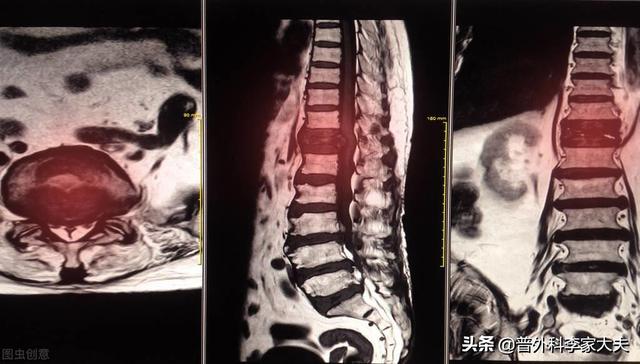
Showing bone metastatic cancer occurring in the thoracic spine
The risk of bone metastatic cancer should be considered if the patient has an abnormally elevated blood calcium, abnormally elevated serum alkaline phosphatase, or abnormally elevated acid phosphatase on blood tests.
X-ray findings of osteolytic, osteogenic and mixed bone destruction should also be considered for possible metastatic bone cancer. Timely bone scanning is a sensitive method to detect metastatic bone tumors.
When bone metastatic cancer is detected, targeted treatment is very important.
Only a very small number of cancer patients are able to undergo radical resection of both primary cancer and bone metastatic cancer at the same time. The treatment for most patients with bone metastatic cancer is usually palliative treatment, which aims at prolonging patients' life, alleviating their pain and improving their quality of life. Chemotherapy, radiotherapy and endocrine therapy are adopted to treat primary cancer and metastatic cancer.
I am Dr. Shadow. Bone metastasis is an advanced stage of cancer. Cancer cells metastasize through the bloodstream and colonize and grow in the bones, causing osteolytic bone destruction or osteoblastic bone density increase. It is a pity that many cancer friends have been found to have advanced lung cancer because of back and leg pain.
When should I be on the lookout for cancer bone metastases?
1. History of cancer presenting with persistent bone pain
If a history of primary cancer is known and persistent pain in a particular area of the bone occurs, be alert to the possibility of bone metastases.
For example, if you have lung cancer and you have had persistent pain in the chest and back for a while and it tends to get worse, then you should be alert to the possibility of bone metastasis. At this time, it is necessary to do a CT to see if there is any problem with the bone. If there is no problem in CT, it cannot be ruled out that there is no metastasis. Because bone metastasis early CT can not see, do ECT or PETCT can be found in advance of the bone metastasis lesions, than the conventional 2-3 months earlier than the discovery of bone metastasis.
2. Development of pathologic fractures
Bone metastasis destroys bone, so it is brittle and breaks easily. In addition to localized pain, a fracture can occur at the slightest accidental touch, exacerbating the pain.
3. Localized soft tissue masses
Bone metastasis causes the bone to be eaten away and the cancer cells grow up locally to form a soft tissue mass, another nest of cancer. That's why there are lumps in addition to pain when you feel it, and that's when you should be alert for bone metastasis as well.
In the absence of a history of cancer, it is possible to have bone metastases with the symptoms listed above.
A case was encountered where a 46-year-old male was seen for persistent pain in his lower back. The low back pain was thought to be a herniated disc. An X-ray was taken and no abnormality was seen. Bone metastases causing slight bone destruction are invisible on X-ray, and a herniated disc is also invisible on X-ray. So I didn't particularly think about the possibility of metastasis. One week later, there was still no improvement, so the patient came for a CT and found that a lumbar vertebra had been eaten away. Seeing such an image, the imaging doctor must think of the possibility of metastasis and suggested the patient to do a CT examination of the chest, and sure enough, there was a mass in the lungs, which was considered as a bone metastasis of lung cancer, which was confirmed by the pathology later on.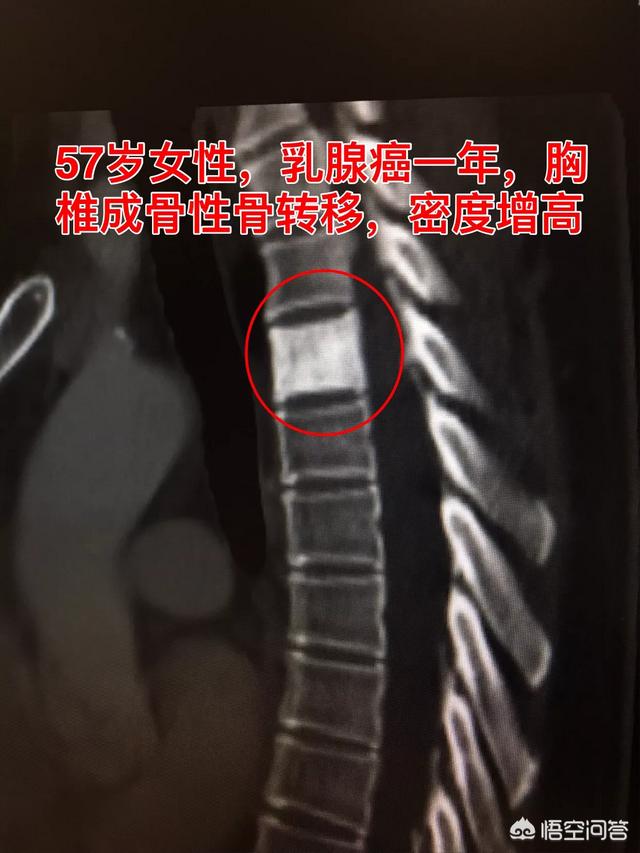
There are many, many more cases of people who have been to the doctor with bone metastases as their first symptom and found out that they have advanced cancer. Cancers that are prone to bone metastasis include prostate cancer, lung cancer, breast cancer, and colorectal cancer. Regardless of whether you have a history of primary cancer or not, if you experience any discomfort, you should go to a regular hospital in a timely manner.
I am.Dr. ShadowPlease follow me if you want to learn more about medicine.
The occurrence of bone metastases or bone tumors sometimes do not have any symptoms at all. A large number of people discover bone tumors by accident in the course of a certain photo examination, and even some people with bone tumors will not be discovered until they die of old age. On the contrary, some people are tortured by bone tumors at a young age, or the bone tumors are caused by metastasis of cancer in other parts of the body, and lung cancer is one of the most common cancers leading to bone metastasis. What are the main bone tumors? What are the characteristics of each? What kind of conditions should be considered as bone metastasis? Today, let me talk about bone tumors with you.
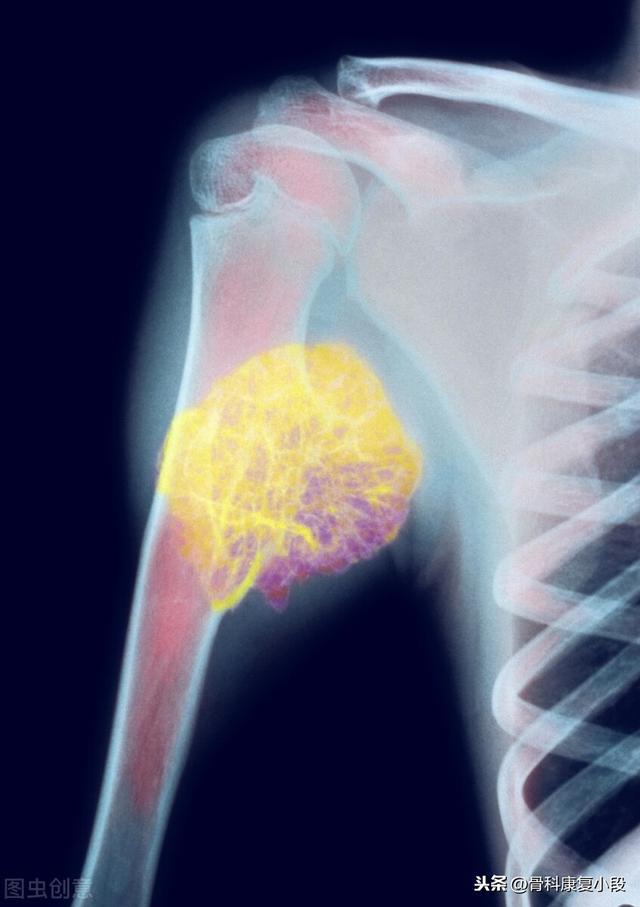
bone tumor
Bone metastasis is a kind of metastasis of cancer, and there are two main categories of bone tumors: primary and secondary. Primary is the tumor that occurs in bone tissue and its affiliated tissues itself, and secondary is the bone metastasis mentioned by the questioner, which is the tumor that occurs in the malignant tumor tissues of other organs or tissues and transfers to the bone tissue and its affiliated tissues through the blood circulation and lymphatic transfer, or the tumor that occurs in the bone tissues by direct infiltration.
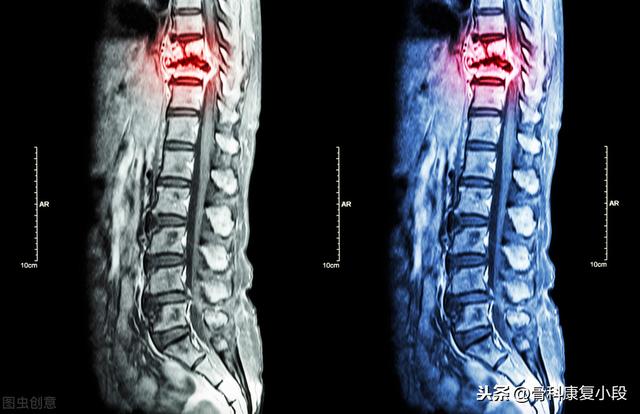
Bone tumors can be classified according to cellular origin:
Bony, cartilaginous, fibrous, myeloid, vascular, and neurologic.
Tumors are classified according to the morphology of the tissue, the degree of differentiation of the cells and the type of cells:
Benign, intermediate and malignant three categories, malignant a bone sarcoma accounted for the first, clinically there are many cases of low differentiated tumor bone metastasis and long-term survival with the tumor, the severity of bone metastasis specifically also need to look at the nature of the tumor.
Introducing three types of bone tumors to make it easier for you to understand the symptoms that occur with bone metastases
The most prominent pain of cancer is pain. In the case of bone tumors, it is found by pain examination in a certain area, in addition to the accidental discovery in a certain examination. Regarding the onset of bone tumors is very much age-specific, for example, osteosarcoma is mostly seen in adolescents, giant cell tumor of bone is mostly seen in young adults, and myeloma is mostly seen in the elderly. Next, I will talk to you about the characteristics of each of the three different types of tumors: osteochondroma, giant cell tumor of bone, and osteosarcoma.
osteochondroma (medicine)
Osteochondroma is a common benign tumor, most of which have family genetic history. Early osteochondroma is asymptomatic, and is most common in the actively growing epiphysis, lower tibia, upper tibia and upper humerus. When the tumor grows to a certain size, it may cause pain due to the compression of the surrounding tissues, such as tendons, nerves, blood vessels, etc., and may even affect the functional activities.
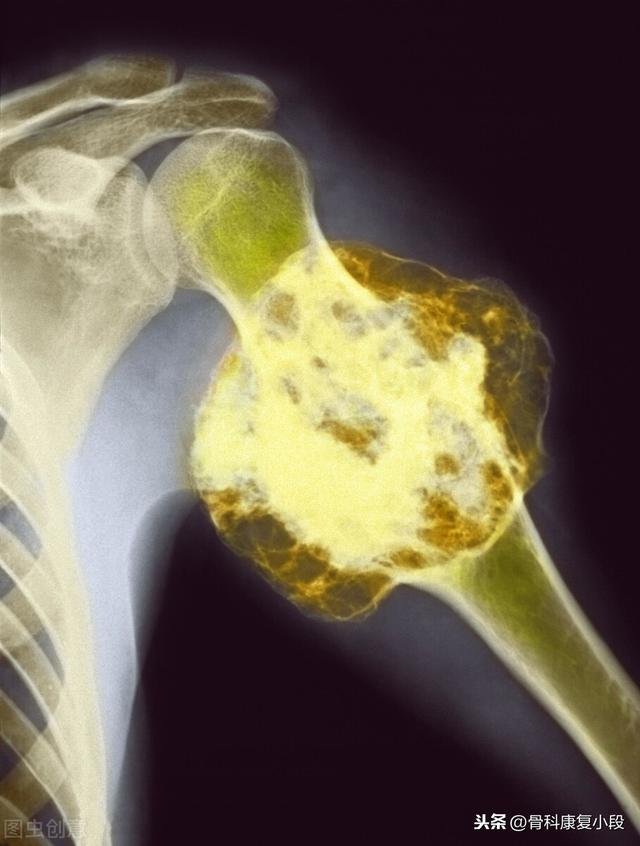
giant cell tumor of bone
Giant cell tumors of bone are soluble tumors originating from the cancellous bone, occurring at ages 20 to 40, more often in women than in men, and mainly in the epiphyses of long tubular bones. The main symptom is pain, which increases as the tumor grows. It is most common in the lower end of the femur or the upper end of the tibia. If the articular cartilage is involved, it will have an impact on joint function.

osteosarcoma (benign tumor composed of bone-like material)
Osteosarcoma is a highly deteriorating tumor and is the most common tumor of primary malignancy, commonly found in the lower end of the femur, the upper end of the tibia or fibula, and the upper metaphysis of the humerus. The main symptom is progressively worsening pain, which at first presents intermittent episodes of vague pain and gradually turns into persistent severe pain. The lesion is swollen locally and soon forms a mass, with increased local skin temperature and varicose veins.
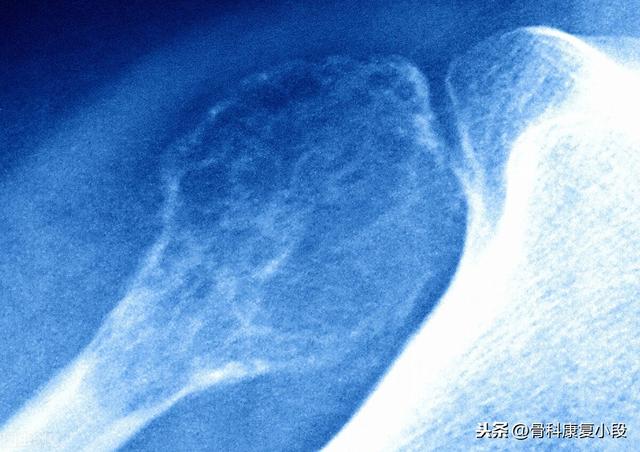
From the three different tumors described above, the most deteriorated bone tumors are instead not as likely to result from bone metastases. However, other tissues leading to bone metastases indicate that the cancer may already be in an advanced stage.
summarize
For cancer metastasis, there are different manifestations according to different metastatic organs, and bone metastasis may appear pain, or pathological fracture, as well as different manifestations of different bone tumors and their locations as mentioned above, including some compression problems caused by the enlargement of bone tumors, or the impact of joint activities caused by the growth of bone tumors close to the joints, or obvious protrusion because of the location of bone stem, etc. Of course, the most prominent symptom for cancer should be pain, right? The most prominent symptom of cancer is pain!
Thank you for reading and I hope my answer can help you in some way. If you think it's good, please give me a like to encourage me, if you can also give me a follow, I think it must be the biggest support for me!
Bone pain, if some kind of cancer has occurred, treated or untreated, and then later develops bone pain, especially in fixed areas, day and night, with the usual painkillers not working well, especially more common in the spine.
For example, in advanced breast cancer, the incidence of bone metastases is very high, with first metastasis to the skeleton occurring in 27 to 50 percent of patients. The vertebrae are the most common, accounting for about half. This is followed by the ribs, pelvis, skull, humerus, femur, tibia and fibula, and scapula.
Pain is the earliest symptom of most bone metastases, >80%, and some metastases present at a very young age. Bone radionuclide scanning (ECT) can be done for breast cancer with suspected bone metastases such as bone pain, fracture, elevated alkaline phosphatase, and hypercalcemia.MRI, CT, and X-rays are confirmatory imaging tests for bone metastases. Some studies have shown that PET/CT has similar sensitivity and higher specificity than ECT and can be used to follow up the condition after treatment of breast cancer bone metastases. If diagnosis is difficult, a bit of bone can be removed for pathologic examination if necessary.
The most common complication of breast cancer bone metastases is bone-related events (SREs), what are SREs?
It is the aggravation of bone pain or the emergence of new bone pain, pathologic fracture, vertebral compression or deformation, spinal cord compression, symptoms after bone radiotherapy, hypercalcemia and so on. Bone metastasis of breast cancer is characterized by "bone-related events" that often seriously affect the patient's independent activities and quality of life, but the bone metastasis itself is generally not a direct threat to the patient's life, and if visceral metastasis does not occur, the survival period will be relatively long.


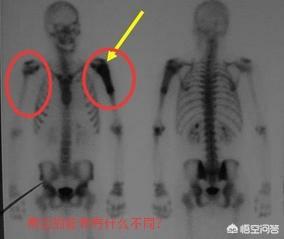
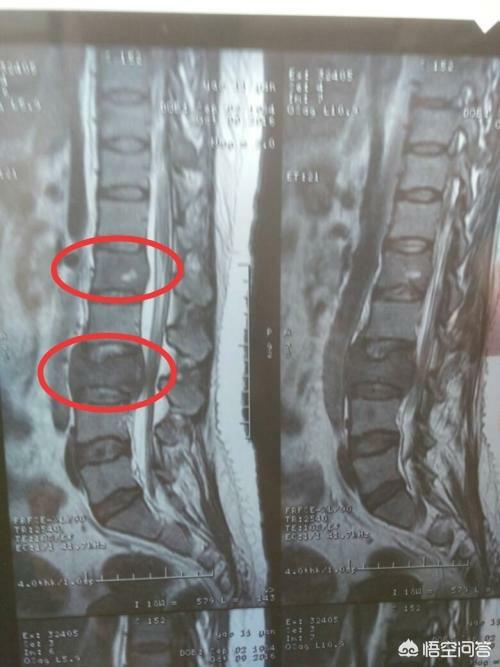
I'm a patient with bone metastases! I think patients with malignant tumors should prevent bone metastases! Because malignant tumors are apparently cured.
But cancer cells are cunning . It hides in the bloodstream. Finds a place to get ready for the attack ! Take me for example! After my treatment.
I've been having chest pains for a while . And the pain is fixed in one place . The pain is so bad that I can't eat or sleep well. I was very irritable. Then I went to the hospital.
The doctor said that everything is normal on the surface, but if not, you should have a ct done. Then I had a ct done and the slip showed everything was normal ! Then I had no choice. I went home.
And he stopped hurting again. Three more months. Because we have to have a big checkup every year for this cancer . The doctor asked me to do a ct. I said I did.
He said you should have a CT scan. To determine if it's a bone metastasis. I did a bone scan and an MRI. Determined to be bone metastasis! So everyone fixed in one place, pain for more than half a month should go to the hospital to check !
This question and answer are from the site users, does not represent the position of the site, such as infringement, please contact the administrator to delete.